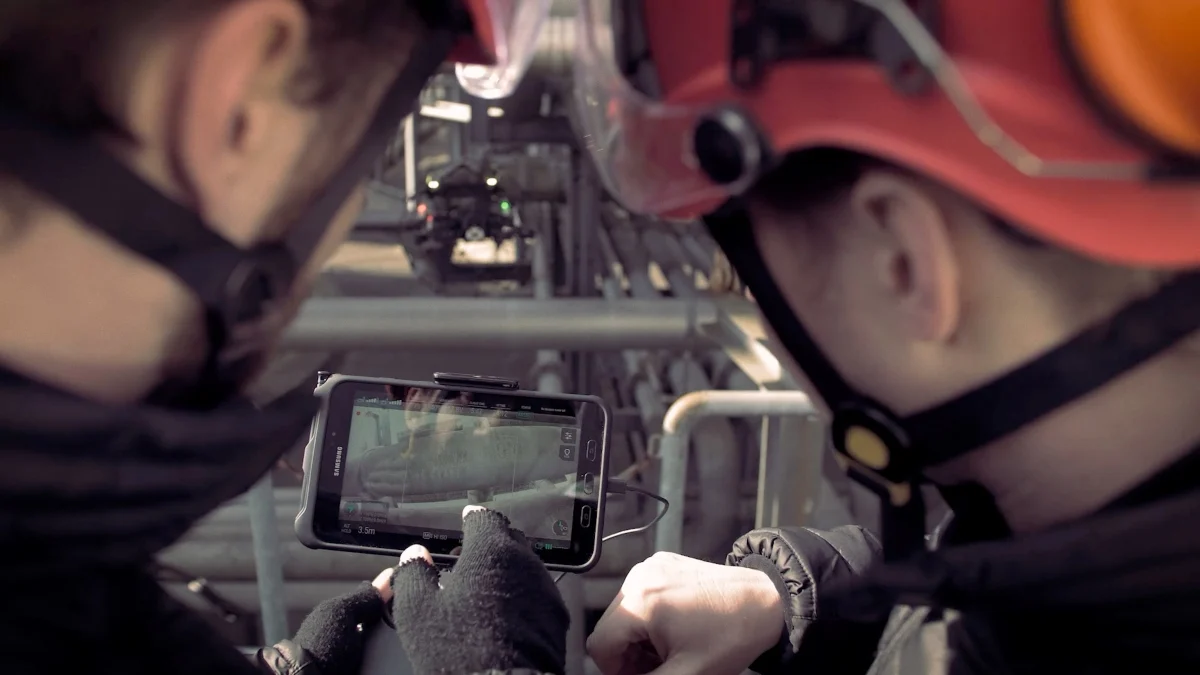In a recent study, the independent consulting firm Boiler Room Consulting (BRC) explored the potential for reducing greenhouse gas (GHG) emissions—specifically carbon dioxide (CO2)—by increasing boiler inspections with the help of Flyability’s collision-tolerant inspection drones. The results were impressive.
BRC found that by increasing the frequency of boiler inspections, supported by Flyability's advanced drone technology, companies could reduce CO2 emissions by as much as 649 metric tons annually. This is a significant step toward more sustainable industrial operations.
To learn how this is possible, keep reading.

**Increased Boiler Inspections = Reduced Emissions**
Most boilers are inspected once a year, which means problems can go unnoticed for long periods. While these issues may not immediately affect the boiler's lifespan, they can still cause leaks and other emissions that harm the environment.
By inspecting more frequently, companies can detect and address issues early, preventing harmful emissions. Regular inspections also help save money by improving maintenance on expensive equipment like boilers and pressure vessels, extending their life and performance.
**Why Don’t Companies Conduct More Frequent Inspections?**
The main reason is cost. Traditional boiler inspections require inspectors to enter the boiler manually, often requiring scaffolding that can be expensive and time-consuming to set up and remove. This leads to downtime and lost revenue, making frequent inspections financially unattractive.
Because of these high costs, many companies only inspect their boilers once a year, even though it's often the legal minimum requirement.
**How Can Flyability Drones Help Increase Inspection Frequency?**
Using a drone instead of a person for internal boiler inspections can cut costs by up to 90% in some cases. This makes regular inspections more feasible and affordable.
But not just any drone works. Boilers have tight spaces and obstacles that can easily damage a standard drone. Flyability’s Elios and Elios 2 drones are designed specifically for confined space inspections. Their protective cage allows them to collide safely and continue flying, making them ideal for boiler inspections.
Watch this video to see an Elios 2 in action during a boiler inspection:
**How BRC Measured the Environmental Impact of Increased Inspections**
BRC focused on the combustion head, a critical part of the boiler that, when damaged, can lead to higher CO emissions, which in turn increase CO2 output. They tested different fuel types—natural gas, #2 fuel oil, and #6 fuel oil—to understand the impact of a damaged combustion head.
Their findings showed that even a small loss in efficiency due to a faulty combustion head could result in significant annual CO2 increases, ranging from 442 to 649 metric tons, depending on the fuel used.
**Key Takeaways from BRC’s Study**
- A damaged combustion head does indeed increase CO2 emissions.
- The amount varies based on the type of fuel used.
- More frequent inspections can catch these issues early, preventing unnecessary emissions.
- Using drones like Flyability’s Elios 2 makes inspections safer, faster, and more cost-effective.
**Conclusion**
BRC’s research highlights the environmental and economic benefits of using drone technology for boiler inspections. By enabling more frequent checks, companies can significantly reduce CO2 emissions while improving safety and saving money.
This study is just one example of how innovative technologies like drones can make a real difference in sustainability efforts. As industries continue to look for ways to reduce their environmental footprint, solutions like Flyability’s drones offer a practical and effective path forward.
Download the full study to explore all the details and findings.
welding robot,robot welding machine,,robotic welding machine automatic,automatic welding robot,welding robot 6 axis
Wuxi Zhouxiang Complete Set of Welding Equipment Co., Ltd. , https://www.beamweldingmachine.com